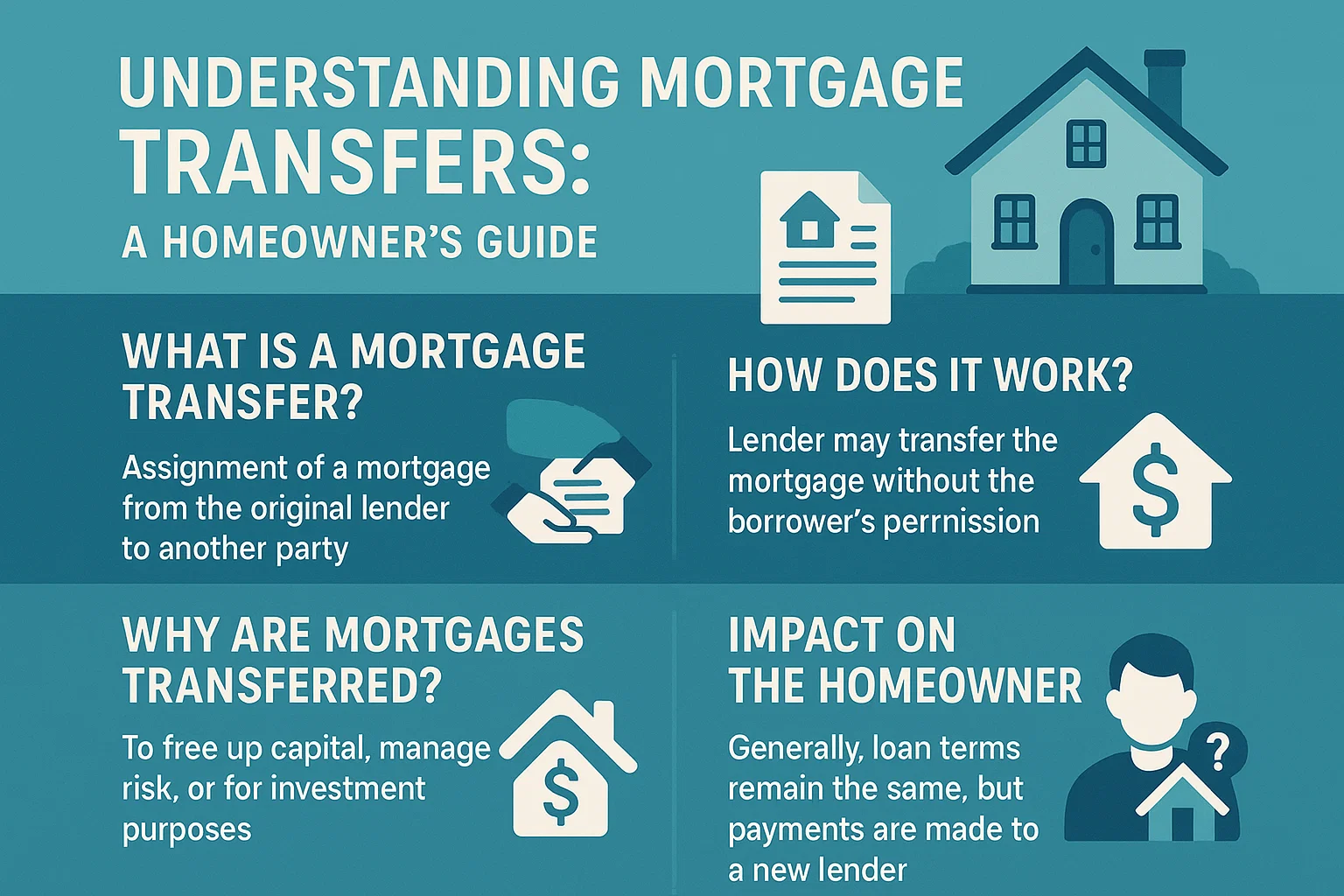Understanding Mortgage Transfers: A Homeowner’s Guide

Understanding Mortgage Transfers: A Homeowner’s Guide
Why Do Lenders Transfer Mortgages?
Discovering that your mortgage has been transferred to a new lender after closing can be surprising, but this practice is standard in the lending industry. Though the terms of your loan remain unchanged, being informed about the process helps reduce uncertainty. Most mortgage agreements include provisions allowing lenders to sell loans to other servicing companies, with approximately 70% of mortgages changing hands during their lifespan.
What Happens When Your Mortgage Is Sold?
Mortgage transfers are legal and routine, but lenders must adhere to specific notification rules:
- Both your original lender and the new servicer are required to notify you at least 15 days before the transfer takes effect.
- The new lender must provide clear details about where to send future payments and how to manage your account.
Your Rights and Responsibilities
While the core terms of your loan (interest rate, repayment schedule, etc.) remain unaffected, pay close attention to:
- Payment due dates and methods under the new servicer.
- Updated contact information for customer service.
- Escrow account adjustments, if applicable.
Steps to Take When Your Mortgage Is Transferred
To ensure a smooth transition:
- Confirm the legitimacy of the transfer by contacting both lenders directly.
- Update automatic payments or billing reminders promptly.
- Keep records of all communications and payments during the transfer period.


